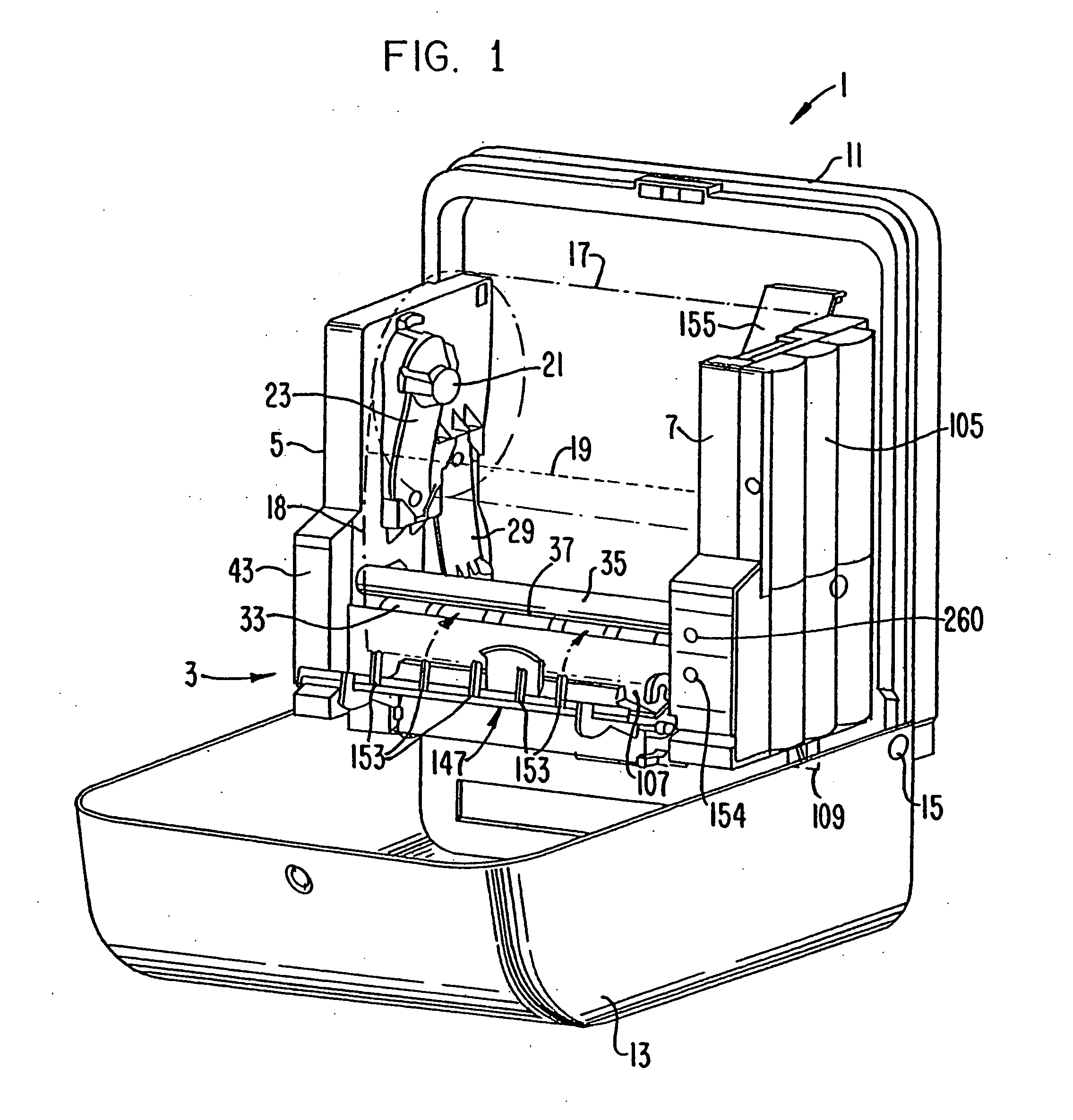Although economical, the
continuous exposure of the soiled toweling is deemed unsightly and, therefore, unacceptable to many consumers when compared to the many available alternatives.
Further, the
exposure and possible reuse of soiled toweling may present additional health hazards and
sanitation concerns which should be avoided.
However, a number of the folded towels will sometimes
drop out of the lower opening of the dispenser when only the exposed towel is pulled, especially when the stack of towels in the dispenser is small.
This can result in a significant waste of paper towels.
Accordingly, folded towels are not as economical as other kinds of alternative dispensers.
However, as can be appreciated, manual contact with a dispensing lever or the like raises health concerns for the user.
Paper possessing the requisite strength to operate the dispenser is limited in the amount of softness and absorbency which can be provided to the paper towels.
While the feed roller is powered, the
cutting action still requires the paper to possess a certain minimum strength and generally produces a rough, unsightly
cut.
While this arrangement enables the use of softer and more absorbent paper, the dispenser requires a substantial amount of energy to drive the feed mechanism and the reciprocating cutter.
Moreover, the system is more complex and costly with its use of one-way clutches.
Hence, the dispenser is subject to easy abuse and waste of paper.
However, the need to wait can be frustrating to users under some circumstances.
While the Goodin et al.
sensing system purports to provide high reliability in avoiding false sensing situations, it is apparent that the stray
capacitance provided by the environment in which a Goodin et al. sensor is installed may adversely affect the frequency of oscillation of the oscillator such that the oscillator circuit must be calibrated so that the sensitivity of the theremin sensor can reliably sense the change in
capacitance provided by a person's hand.
This can require complex towel threading and loading sequences.
In contrast to folded
paper towel dispensers, conventional roll towel dispensers do not provide an economical way to replenish the towel supply when a partially depleted roll, i.e., a “stub” roll, remains within the dispenser.
In some prior art dispensers, a new roll must be substituted for the stub roll, thereby resulting in the waste of whatever paper remains on the stub roll.
This can result in increased
operational costs as a significant amount of paper may be wasted in facilities with many dispensers.
Unfortunately, tension responsive transfers are not particularly reliable since conditions other than reaching the end of the roll can trigger their operation, such as the slackening of the web or a break in the web material.
Diameter responsive transfers also have a drawback in that the reserve web begins dispensing prior to the complete exhaustion of the primary roll.
Thus, for a short time web material is dispensed simultaneously from both rolls and again results in a waste of material.
The use of sensing fingers on the web material, however, produces extra friction which can inadvertently tear the web.
Moreover, the introduction of additional components to sense the absence of the web and transfer the reserve web to between the feed rollers creates opportunities for a transfer failure to occur.
While generally quite effective, the movement and spring biasing of a relatively high
mass feed roller can lead to difficulties.
If the spring bias is set too high, the biasing force may inhibit smooth feeding of the web material through the rollers, and result in tearing of the web material.
If it is set too low, the mechanism may not actuate effectively to cause a transfer of feed to the reserve roll immediately upon depletion of the stub roll.
Over time, the spring bias provided to move one roll relative to the other is prone to eventually decrease, e.g., due to fatigue of the spring, such that ultimately the
spring force may fall below the required relatively
narrow range and thus be insufficient to properly actuate a web transfer.
 Login to View More
Login to View More  Login to View More
Login to View More 


